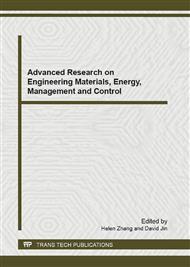p.526
p.531
p.535
p.540
p.545
p.551
p.555
p.560
p.564
Application of Organic Inclusion in Hydrocarbon Exploration
Abstract:
Inclusion as a research method was mainly applied in the study of mineral deposit geology in the beginning. In recent years, organic inclusion research has become one of the important means in hydrocarbon exploration. The study of the inclusion can determine the role of diagenesis and reservoir of time and temperature, infer hydrocarbon migration, tectonic movement and paleo-heat flow history, in order to better guide hydrocarbon exploration. This paper mainly discussed research method of hydrocarbon inclusions type and oil and gas inclusion, and summarizes the inclusion of the fracture structure used to study and hydrocarbon accumulation relations, determines the gas accumulation time, evaluate hydrocarbon, calculate fluid potential, predict oil and gas accumulation zones, and other aspects of the role. Inclusions found early, at first is mainly applied in the study of mineral deposit geology. Since Marray (1957) discovered larger hydrocarbon inclusions in quartz especially[1], in the 70 s, with the development of oil geochemical, the minerals fluid inclusions in the oil field geological research has been widely used. G. m. Gigashvili and v. p. Kalish in 1977 are the first to report the use of mineral inclusions as the hydrocarbons containing hydrocarbon migration of physical and chemical condition of fluid of the index. At the beginning of the 80's, the technology has already been foreign research institutions and oil company are widely used in reservoir the diagenesis of research and oil and gas exploration [2,3,4]. China has begun to set up in the 1960 s, the early main inclusions laboratory to research various metal hydrothermal ore deposits in the ore-forming temperature and the composition of the ore-forming fluid. ShiJiXi (1985,1987) will fluid inclusions method is used to study the carbonate formation of China and the thermal evolution degree, division of hydrocarbon generation evolutionary stages, according to package the body type, distribution, homogenization temperature, salinity, gas organic composition various inclusions observation and analysis data put forward the carbonate hydrocarbon source rocks and oil and gas reservoir has performance evaluation method and hydrocarbon index[2,5,6]. In petroleum exploration, through[[ First Author: Huiqing Liu (1980-), male, doctoral students, Major: mineralogy petrology mineralogy,E-mail:liu8935959@163.com]] the study of the sandstone reservoir formation of diagenetic minerals fluid inclusions, and combining with the chip observation to judge whether have oil and gas migration to reservoir, and oil and gas accumulation of time, ancient geothermal, formation water such as the salinity has a very important significance
Info:
Periodical:
Pages:
545-550
Citation:
Online since:
January 2012
Authors:
Price:
Сopyright:
© 2012 Trans Tech Publications Ltd. All Rights Reserved
Share:
Citation:


